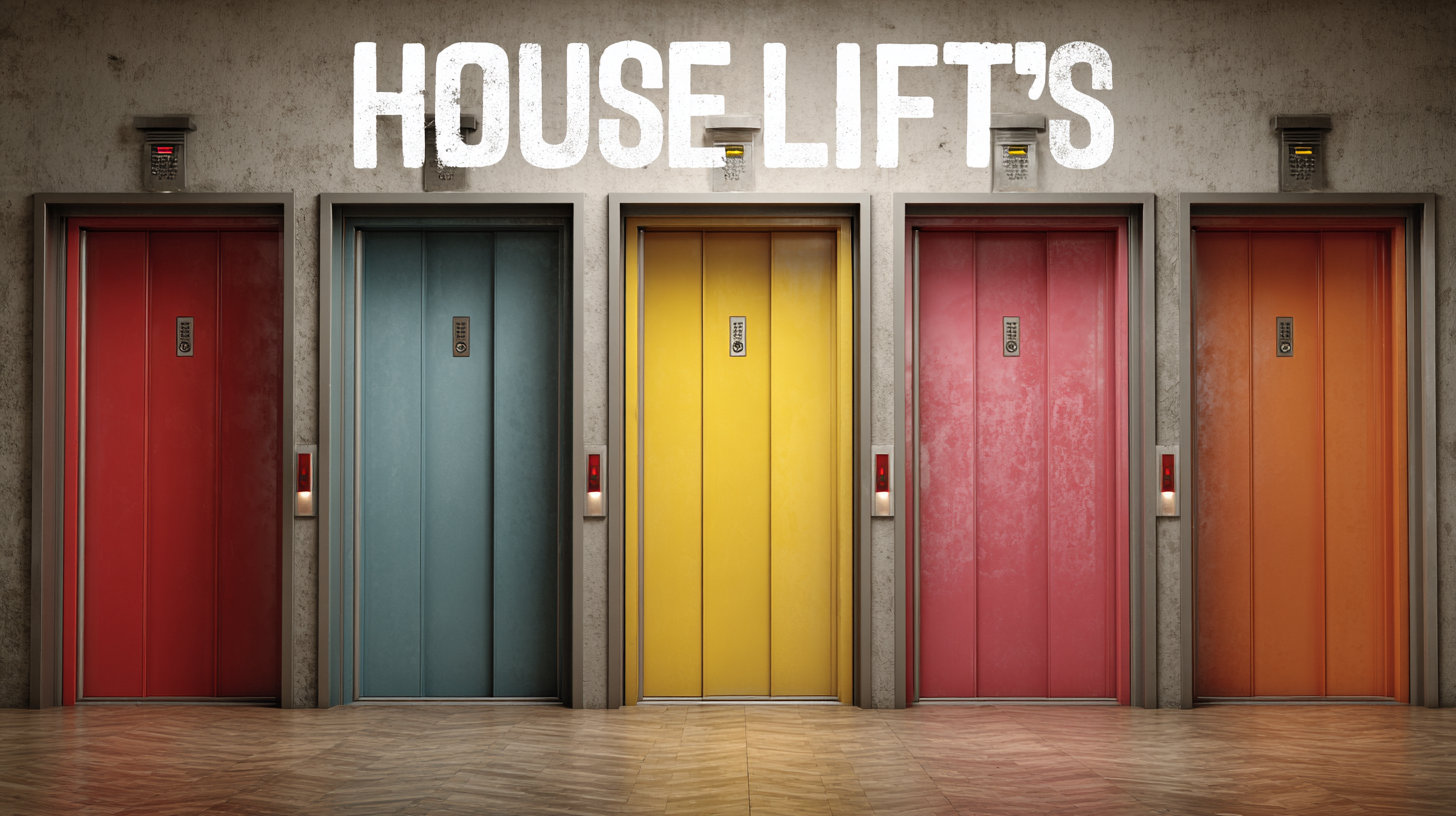How to Choose the Best House Lifts for Your Unique Needs
As the demand for residential accessibility solutions continues to rise, the importance of selecting the right House Lifts for individual needs cannot be overstated. According to a recent industry report by IBISWorld, the global market for residential elevators is projected to reach USD 9.32 billion by 2025, driven by an increasing aging population and a growing emphasis on home mobility. This surge in popularity highlights the necessity for homeowners to consider various factors such as design, space requirements, and technological advancements when choosing House Lifts.
 Furthermore, with high-quality manufacturing options available, particularly from leading Chinese factories, homeowners are now faced with a wealth of choices that cater to both functionality and aesthetics. This blog aims to guide you through the critical decision-making process to ensure that your investment in House Lifts aligns perfectly with your unique lifestyle needs.
Furthermore, with high-quality manufacturing options available, particularly from leading Chinese factories, homeowners are now faced with a wealth of choices that cater to both functionality and aesthetics. This blog aims to guide you through the critical decision-making process to ensure that your investment in House Lifts aligns perfectly with your unique lifestyle needs.
Understanding Different Types of House Lifts Available in the Market
When considering house lifts, it's crucial to understand the various types available on the market, as each is designed to meet different needs and preferences. Among the most common types are hydraulic lifts, which are known for their robust design and smooth operation. These lifts use a hydraulic system to move the cabin, making them suitable for taller buildings. They are often quieter than other types but may require a pit for installation, which can affect building designs.
Another popular option is the traction lift, which operates using a system of ropes and pulleys. This type is more energy-efficient compared to hydraulic lifts and is ideal for mid-rise homes. Traction lifts can be installed with or without a machine room, offering greater flexibility in design and space utilization. For those looking for a more compact and less invasive option, vacuum lifts are an innovative choice. They use air pressure to lift the cabin and require minimal structural modifications, making them an excellent fit for existing homes where space is limited. Understanding these types can help homeowners select the right lift that aligns with their specific needs and home layout.
Key Benefits of Installing a Home Lift for Mobility and Accessibility
Installing a home lift can significantly enhance mobility and accessibility within your living space. For individuals with limited mobility, such as seniors or those recovering from surgery, a home lift offers a practical solution to navigate different levels of their home without the strain of stairs. By transforming accessibility in a multi-story house, these lifts empower residents to maintain their independence and comfort, reducing reliance on assistance from family or caregivers.
Beyond the obvious convenience, the key benefits of home lifts extend to improving the overall utility of a residence. They can increase the value of your property by making it more appealing to a broader range of potential buyers, particularly those seeking a long-term living solution that accommodates future mobility issues. Additionally, with various designs and styles available, homeowners can choose a lift that complements their interior aesthetics, ensuring that practicality does not compromise elegance in their home environment. Ultimately, a well-chosen lift can reshape daily living, offering safety and ease of access while enhancing the overall quality of life.

Factors to Consider When Choosing the Right Home Lift for Your Space
When selecting the best house lift to meet your unique needs, several pivotal factors require careful consideration. First and foremost, the
available space within your home plays a crucial role. According to a recent report by
the Lift and Escalator Industry Association (LEIA), home elevators can vary significantly in size, with
compact options designed for smaller spaces as narrow as
30 inches in width. This adaptability makes it essential to assess your home's layout to
determine which dimensions will fit seamlessly into your design while maintaining accessibility.
Another vital aspect to consider is the lift's
weight capacity. The average residential elevator can support between
450 to 1,100 pounds, depending on the model. Data from the
American Association of Elevator Engineers indicates that a proper weight assessment can guide you
in choosing a lift that accommodates not only individuals but also heavy items like furniture or groceries. Furthermore,
energy efficiency should not be overlooked; modern house lifts are designed to consume
considerably less energy, with some utilizing as little as
1 kilowatt per hour, making them an environmentally friendly option for homeowners conscious
of their ecological footprint.
Energy Efficiency and Cost Savings of Modern House Lifts
When selecting a house lift, energy efficiency should be at the forefront of your decision-making process. Modern house lifts are designed with advanced technology that minimizes energy consumption while maximizing functionality. These lifts often utilize energy-efficient motors and systems that reduce power usage significantly compared to older models. By investing in a contemporary house lift, homeowners can enjoy the benefits of lower electricity bills and a smaller carbon footprint, making it an environmentally responsible choice.
Cost savings don’t stop at energy efficiency; many modern house lifts come with additional features that enhance their overall value. For example, some lifts are equipped with regenerative drives, which help capture and reuse energy when the lift descends. This innovative technology not only saves energy but also extends the lifespan of the lift by reducing wear and tear on components. Furthermore, by choosing a lift that integrates seamlessly with your home’s existing infrastructure, you can avoid costly installation modifications, ultimately contributing to your savings. Embracing modern house lifts is not only a smart investment in convenience but also a strategic move towards sustainable living.
Safety Features to Look for in a House Lift for Peace of Mind
When selecting a house lift, security features are paramount to ensure peace of mind for homeowners. In addition to the standard specifications, look for advanced safety mechanisms such as emergency stop buttons, automatic brakes, and overload sensors. These features can help prevent accidents and ensure secure operation, particularly for families with young children or elderly members. A lift equipped with reliable safety systems is essential for making the home accessible without compromising the well-being of its inhabitants.
Moreover, with the increasing popularity of
smart home devices, integrating technology into your lift can enhance security. Features such as
remote access controls and user identification systems can provide additional layers of safety, allowing you to monitor who uses the lift and ensuring that it operates securely. Just as homeowners are investing in comprehensive security systems to safeguard their properties, selecting a house lift with robust safety features is a critical aspect of modern home design, ensuring both convenience and security in daily life.